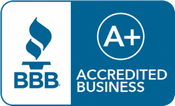
The Federal Reserve Raised Interest Rates. Now what?
Published on December 17, 2015
While all eyes are on Congress this week as it works out a budget deal and attempts to avert another government shutdown, the Federal Reserve moved to end an extraordinary period of near-zero borrowing rates. The Fed raised interest rates this week from record lows set at the depths of the 2008 financial crisis, signaling the central bank's belief that the economy has finally regained enough strength to withstand modestly higher borrowing rates.
The central bank voted Wednesday to raise the federal funds rate — the rate banks charge each other for overnight loans — by a quarter percentage point. The hike ushers in a new era for the Federal Reserve, which has promised to increase rates gradually to ensure that economic growth isn’t derailed. The new target range for the federal funds rate is 0.25% to 0.5%, up from zero to 0.25%.
Overall inflation aside, here are 5 ways you may feel the effects of the Fed’s new policy direction:
- You’ll pay more more to do business.
Interest rates affect everything in the business world, including the amount of money you must pay on your loans (and credit cards), and the ease of obtaining those loans. Supply costs also increase. It just got more expensive to do business.
High interest rates also take money and credit away from your customers, so be prepared for a possible slow down. Now is the time for effective pricing and marketing strategies.
- You’ll pay more for home loans.
Rates on adjustable-rate mortgages (ARMs) will react quickly to any rise in the fed funds rates. That’s because ARMs typically are tied to the prime rate or LIBOR, both of which closely track the Fed rate. Rates on the most common mortgages — the 15- and 30-year fixed — will rise gradually. That rate follows the yield on the 10-year Treasury note, which usually moves in the same direction as the fed funds rate, but not in lockstep.
Rates on existing home equity loans are fixed, so don’t worry about a rate hike if you already have one. But if you’re shopping for a new equity loan, you will see higher loan rates. Equity loans track the increase of the 10-year Treasury yield, which follows the direction of the fed rate, but at a slower pace.
If you have a home equity line of credit, or HELOC, be prepared for an immediate (within 30 days) rate hike. Most HELOCs track the prime rate, which is also tied to the fed funds rate. To help yourself, ask your lender to fix the interest rate on the amount you have already borrowed on the HELOC. The rate increase would then only affect any future borrowing.
- You’ll see an increase in your credit card APR.
Most interest rates on credit cards are variable and are often tied to the prime rate, just like HELOCs. That means the rate on your credit card will increase shortly after the Fed raises rates. However, the higher interest rate only applies to purchases made after the increase. Any previous debt is subject to the old rate.
- On the upside, you’ll earn more on savings and investments.
Rates on CDs, money market accounts, and savings accounts are highly correlated with the fed funds rate and move closely with it. If the Fed raises rates, that means better returns for savers. There’s a long way to go before rates hit the 5 percent glory days, however, so the next few years will still be difficult on depositors looking for yield.
Returns on bonds are going to get better. Yields on short-term Treasury bills will go up in tandem with any rise in the federal funds rate. Its effect on medium- to longer-term notes and bonds will be more muted, but will generally rise as the Federal Reserve implements more hikes down the road. That will attract more investors into Treasuries, driving their prices down.
- Another positive: more money in retirement.
Many retirees buy annuities in hopes of getting a safe stream of income, but recent low rates have undercut that strategy. Rates on annuities will get a small boost from Fed rate hikes, and that’s a good thing for retirees.
The monthly income received from a fixed annuity is based on interest rates at the time of purchase. As rates climb, it’s a good idea to think about purchasing annuities, particularly if retirement is close. Discuss your best approach with your financial advisor.
As of today, the Fed expects only gradual increases in the federal funds rate. However, the actual path of the rate will depend on the economic outlook as informed by incoming data. The federal funds rate will change as the economy invariably shifts. A strong yet flexible strategy, both personally and corporately, will ensure your success.






